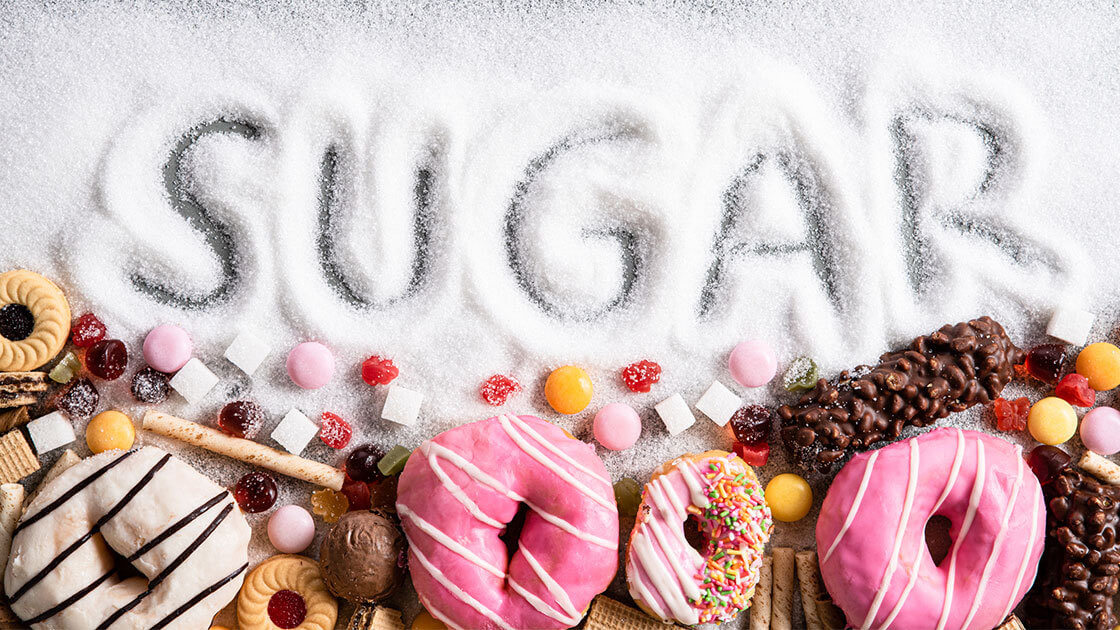
Importing sugar provides more than just a sweetness to American manufacturing - it's a necessity for many of the drink and food processing industries providing jobs in the United States. Despite the domestic U.S. sugar industry, increasing demand creates significant opportunities for importers to enter the market.
The U.S. Department of Agriculture (USDA) and the U.S. Trade Representative (USTR) have control over sugar imports. Import restrictions on sugar products, such as tariff-rate quotas, were established by the Uruguay Round Agreements Act in 1994. Supply shortages have caused the U.S. to increase import limits as of June 2022.
Sift your way through a few flavors worth of information on sugar imports and how you can successfully enter this competitive field.
Roses are red, violets are blue, sugar is sweet as an import for you.
Fun and rhymes aside, importing sugar into the United States pits you against a few interesting challenges. Number one among those challenges is the presence of the domestic sugar industry. During the last fiscal year, a number of events led to a decline in the U.S. production of this globally traded product. Weather delayed the planting of sugar-producing crops and an ever-increasing demand means farmers and refineries just can’t keep up.
So how can you succeed as a sugar importer? The first step is realizing just how vast the world market is for sugar and sugar sources. With a better understanding of the whole market, opportunities become easier to see.
The global market for sugar is split up in a few ways.
The variety of products works for importers because it creates various avenues to expand or shrink into as we enter a fluctuating world trade economy.
If you plan on importing honey specifically, check out our article on what you need to know.
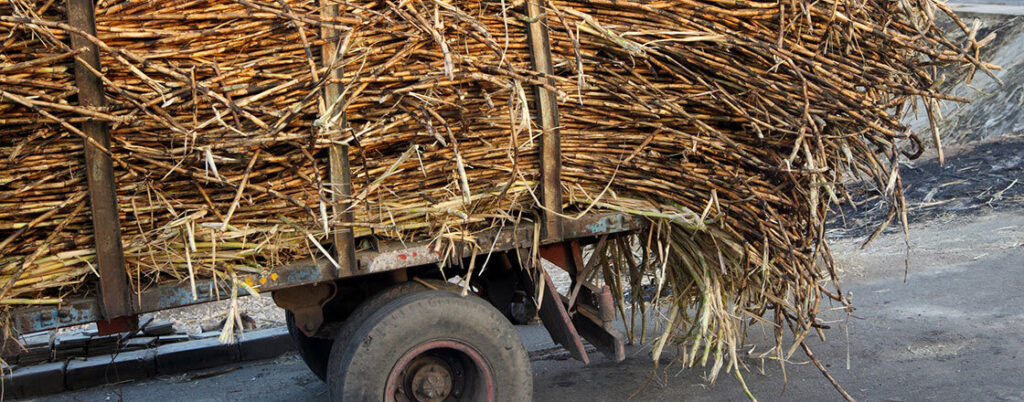
As with other imports that may compete directly with domestic industries, sugar imports are regulated on a few different levels. The sugar import program is actually a standard policy within the USDA that’s aimed at controlling the amount of sugar available to the U.S. market.
Different government acts and trade agreements with other nations impact the success of an importer within the program.
These regulations and FTAs must be carefully navigated by importers to avoid fines and higher tariff rates that could eat away at profits.
Other FTAs that specifically allow for the import of sugar and sugar products include:
Of course, it’s possible to import sugar from countries where we don’t have FTA, but this list can provide a starting point for new importers.
The services of an experienced customs broker are usually required to obtain the necessary documentation for the import of regulated products, especially if you are new to the importing business.

Our 45 Minute Licensed Expert Consulting Will Personally Guide You.
The need for a permit or license for importing sugar depends on the type, quantity, and source nation you are importing from. In short, yes you need an import permit or certificate of quota eligibility from the USDA for the majority of sugar imports.
These are two different documents. Depending on a few different factors, you may need one or both. Let’s start with the import permit itself.
Sugar cane imports, whether of the cane itself or any of its related by-products, need an Animal and Plant Health Inspection Service (APHIS) permit from the USDA. Granted, sugar cane is not sugar, but it is the source of raw cane sugar. If you were looking to import a lower tariff product for the purpose of providing raw material to sugar refineries in the U.S., this is one way to do so.
There are two kinds of APHIS permits for sugar cane and its related by-products.
As for sugar beets, they were granted special unregulated status in 2012 by the USDA. Most sugar beets in commercial use are genetically designed to be resistant to a specific herbicide known as Roundup®.
These engineered sugar beets, referred to as H7-1 or Roundup® Ready (RR) sugar beets, do not need an APHIS permit for import.
APHIS permits can only be submitted by U.S. residents with a domestic address. Foreign importers would need a partner agent within the U.S. to qualify and act on their behalf.
Now for actual sugar, refined and raw. As with APHIS, there are different types of Eligibility Certificates to import sugar.
These certificates revolve around import quotas which limit how much raw and refined sugar, as well as specialty sugars and sugar-containing products, enter the U.S. There’s enough regulation of sweets to make your teeth hurt.
Even so, we want to ensure you can enter the sugar import market successfully. Thankfully, this has actually become easier. Demand for sugar keeps going up, as do prices, so quotas or not, there is room for growth.
Related: Importing Vanilla Beans to the U.S.: Everything You Need to Know
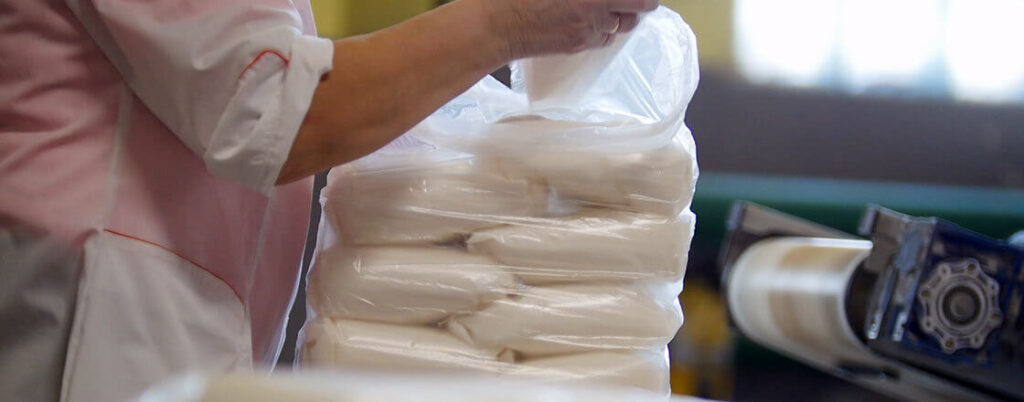
As mentioned, importing sugar into the U.S. is controlled through a set of quotas. More specifically though, Sugar Tariff-Rate Quotas (TRQs) regulate the amount of sugar allowed as an import at a lower duty rate. To clarify, it doesn’t mean that sugar above a certain tonnage will be turned away. It means that if you import more sugar than what is allocated on your import certificate, you pay a higher duty rate.
This two-tier system allows importers to make a good profit from sugar sales while preventing market dumping that could damage domestic production.
When the AoA was passed in 1994, the U.S. agreed to a minimum import number for raw and refined sugar.
| Category | Amount in Metric Tons Raw Value (MTRV) |
| Raw Sugar | 1,117,195 MTRV |
| Refined Sugar | 22,000 MTRV |
These amounts can be increased to combat any domestic shortages, but can’t go any lower. Within the refined sugar quota is a subsection for specialty sugars. Its base TRQ is 1,653 MTRVs.
When selecting your imports, it’s best to thoroughly understand how the products in each category are defined. The difference between raw and refined sugar is the amount of sucrose present. Polarity measures the percentage of sucrose.
Sucrose is the chemical designation for a type of sugar. The others are fructose and glucose. Only sucrose sugars are subject to TRQs.
The refinement process used to create standard, granulated table sugar purifies sugars and increases their polarity by removing the molasses that gives raw sugar its darker color. The more molasses sugar has, the lower the polarity.
To qualify for a raw sugar CQE, the product must have a polarity of fewer than 99.5 pols. Anything higher is defined as refined sugar. One reason for the measurement process is the lower sugar TRQ for raw compared to refined products.
You can also check category status through HTS code.
| Raw Sugar: |
| 1701.13.1000 |
| 1701.14.1020 |
| 1701.14.10.40 |
| Refined Sugar: |
| 1701.12.1000 |
| 1701.91.1000 |
| 1701.99.1015 |
| 1701.99.1017 |
| 1701.90.1000 |
| 2106.90.4400 |
The codes used for refined sugar are the same as those used in specialty sugar imports. The main difference is that specialty sugars require a USDA Speciality Certificate.
Specialty sugars within the refined sugar category are defined in a specific list, last updated in 1996 in the Federal Register.
Specialty sugars currently include:
The organic sugar market actually presents a rather unique opportunity for importers. The demand for natural and organic products is still rising, and as of now, there is only one company within the U.S. producing certified organic sugar.
For more information on organic imports, check out our Definitive Guide to Importing Organic Food.

Our 45 Minute Licensed Expert Consulting Will Personally Guide You.
Total tonnage is divided up among applicants from 40 different countries, not including nations with FTA’s with specific sugar provisions.
The USTR decides the amount allocated to each country during a fiscal year, which actually begins on October 1 of each year. Importers can file for an allotment on a first-come, first-serve (FCFS) basis until the quota has been filled.
Anyone looking to import from one of the 40 countries recognized by the USTR or from an FTA country, including foreign residents, is eligible to apply for a CQE.
There are other important characteristics of a CQE that importers should know.
If you happen to go over your quota, the sugar can still be brought in, but at the over-quota tariff rate which is higher. If you don’t want to pay the higher rate, you do have other options.
None of these options are without some kind of cost, even destruction. The CBP will still charge you a fee for use of their supervisory time and possibly for the use of facilities to destroy the product.
The regulation of sugar imports began with the 1981 Farm Bill. TRQs are one of the methods used to stabilize U.S. sugar prices which tend to be higher than those of the world market. Price control protects the agricultural sector of the sugar industry.
The U.S. is currently in sixth place in terms of sugar production in the world, and much of it is used domestically. Sugar cane and sugar beets are commercially grown in 14 different states and represent thousands of jobs. Without regulation, the domestic industry could be outpriced and unable to keep up with foreign prices.
Without domestic production, those high U.S. sugar prices would probably be even higher. This shouldn’t turn you away from importing though. Even with those regulations in place, the U.S. ranks number three in the world for sugar imports.
During the 2021/2022 fiscal year, Statista reports that the U.S. imported about 3.15 million metric tons of sugar.
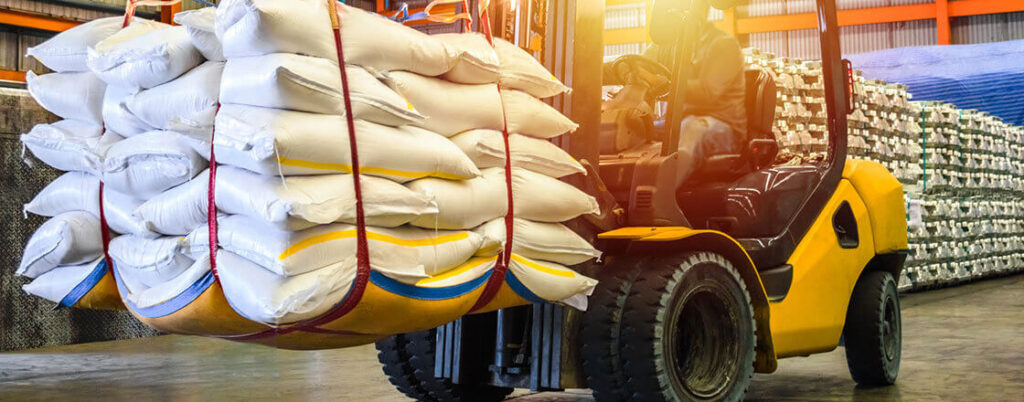
If you want to avoid the complexity of the TRQ system, you can work within the USDA’s re-export program instead. There are three different re-export program certificates issued by the USDA.
These products are not subject to TRQs because they are not intended to stay within the domestic market. They are actually encouraged as a way of using U.S. refineries and manufacturing facilities to their fullest potential.
There are three different re-export programs, each one affecting a slightly different market within the sugar industry.
The application process for each subsection of the re-export program is similar. You must provide a name, address, and the address of where records are maintained.
Additional information needed includes:
The USDA provides a variety of options for importers to use as part of the document agreement. If you want to use a document that they don’t yet recognize, you can still make the suggestion. It's important to choose documents you know you can get a hold of because these could also be used for auditing purposes.
Importers who are using a U.S. agent to represent them in-country need to have the individual indicate they are acting on behalf of the licensee.
This is the broadest of the re-export programs in the sense that it covers three different aspects of the sugar industry. Importers and refiners can obtain this license.
A license from the USDA within this program permits the following:
Effective use of this program helps the American manufacturing industry and opens the path to a foreign market for importers to expand their trade.
License holders are required to submit the following information about each import to the Foreign Agricultural Service (FAS) online portal.
All the documents that this information comes from should also be kept secure. The USDA and FAS may request them to verify the information you provide.

Our 45 Minute Licensed Expert Consulting Will Personally Guide You.
This license would be for importers focused only on the manufacturing field. Importers with this license can bring in any world-priced sugar, raw or refined.
However, it must be used in products that are intended for export to the world market and should not be placed into domestic circulation.
Just like the refined sugar re-export program, a record of transactions must be submitted to FAS. However, it isn’t as extensive and requires only four fields.
Once again, all documents serving as proof of the submitted information should be stored for verification and possibly audit purposes.
Sugar alcohol and polyhydric alcohol is the same substance. The preference of one term over another generally has more to do with the industry it's being used in.
Most familiar is the use of the term sugar alcohol as it relates to making low-calorie sweeteners. However, if you are obtaining a license in this program, the sugar alcohol cannot be used to produce anything intended for human consumption.
This takes us to the industry that uses the more scientific term, polyhydric alcohol. Chemists use it to create:
These, along with a few others, are the products that can be exported if you import sugar within this program.
FAS requires licensees of the polyhydric program to submit:
Although less information is recorded within FAS, it is still just as important to retain all import documents.
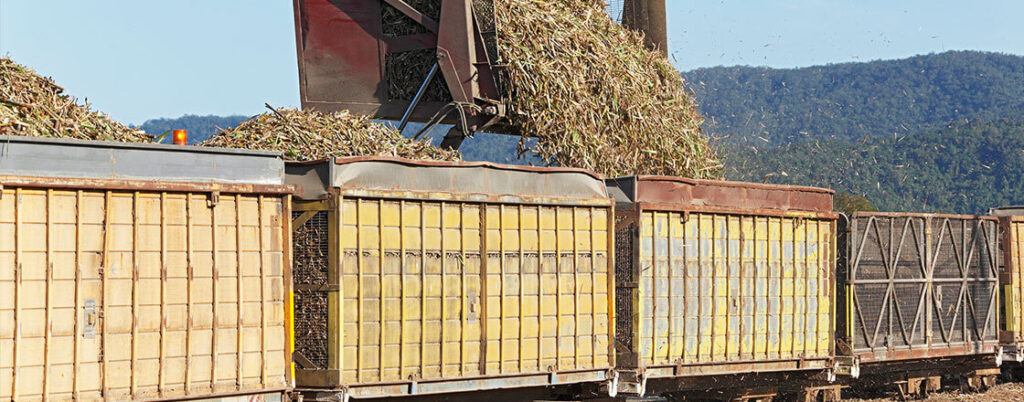
Provided that you can get all your documents and permits in order, where are the best places to import sugar from? At the moment, some of the most affordable places to import sugar from are Mexico and Canada.
Due to the USMCA, sugar from Mexico and Canada is nearly duty-free within a set quota and shipping is more affordable because it doesn’t require ocean passage.
In terms of allotted TRQ shares, the other top nations are:
It’s important to recall that the allowed TRQ amounts are divided among 40 nations. That means that outside of the five nations mentioned, affordable sugar imports are very limited.
In 2014, the International Trade Commission (ITC) and the Department of Commerce (DOC) started an anti-dumping and countervailing investigation against sugar from Mexico. As a result, a suspension agreement between the U.S. and Mexico in 2014 was reached. This agreement placed import limits in place and required all sugar imports from Mexico to have an export license.
Further amendments were made to the suspension agreement in 2017 that set specific reference prices for imported Mexican sugar.
The raw sugar must be transported free-flowing in a bulk container. No kind of packaging is permitted. Refineries in the U.S. must process and package the sugar according to Food and Drug Administration (FDA) regulations.
If either nation pulls out of the suspension agreement, duties could rise to as much as 80% because antidumping and countervailing duties would be enforced.
So far, the suspension is holding. As of 2020, the U.S. was still getting over 30% of its imported sugar from Mexico. Canada comes in second and accounts for 16.9% of U.S. sugar imports.
Outside of Mexico and Canada, many nations have been steadily increasing their sugar export numbers.
| Brazil | $9.02 Billion |
| India | $2.35 Billion |
| Thailand | $2.05 Billion |
| Germany | $982 Million |
Of these four nations, Brazil has had the most impressive growth. Between 2019 and 2020, Brazil managed to increase its sugar exports by 69%.
For importers looking for new opportunities, this is a big deal. There has never been a better time than now to get into the industry. As of July 2022, the USTR announced it was increasing its TRQ by 235,000 MTRVs for raw cane sugar; refined and specialty sugar are also expected to get increased TRQs.
Let’s get a better look at what it would take to import sugar from Brazil. While other nations on the previous chart have impressive production values, they are all eastern hemisphere countries. A simple comparison of average trade lane rates reveals the difference that makes in shipping costs.
To ship a forty-foot container across the Pacific costs between $17,000 to $15,000, depending on whether it’s heading for the West Coast or East Coast. In comparison, a shipment from Brazil to the U.S. runs between $5,000 and $6,000 per container.
That is a $10,000 difference in shipping.
Considering there is still a duty to be paid upon import, that 10K you can save by shipping from closer sources can go towards licensing, duties, and your profits.
As a country right in the middle of the Tropics Belt, Brazil has always had an ideal environment for growing sugar cane, the number one source of raw sugar. However, prior to the Covid 19 pandemic, most of the sugar cane grown in the country was marked for use in ethanol production.
A rocky fuel market led to increased amounts of cane being processed into sugar instead, a trend that has continued thus far. Importers can take advantage of the added availability and the increased TRQ allotment.
| Product | In-Quota Tariff | Over-Quota Tariff |
| Raw Sugar | 0.663 cents per pound | 15.36 cents per pound |
| Refined Sugar | 1.660 cents per pound | 16.21 cents per pound |
These are the base charges for raw and refined sugars. Anything that counts as a specialty may have a different tariff.
We highly recommend that you speak with a licensed customs broker prior to making any final decisions or officially starting the import process. If you have an outline of what you hope to accomplish, that may help an experienced consultant guide you through the proper channels.

Our 45 Minute Licensed Expert Consulting Will Personally Guide You.
Take your shot at importing sugar into the U.S. and make the world just a little sweeter. USA Customs Clearance is here to guide you through the process and ensure your success.
Our 1-on-1 Customs Consulting sessions are always between you and one of our licensed and experienced Customs Brokers. We’ve helped hundreds of clients ship thousands of products from all over the world.
Get the advice your business deserves and get your import started right with all the proper documentation.
Call us today at (855) 912-0406 or schedule your personal consulting session online now. Start your import journey with experience on your side.
 Copy URL to Clipboard
Copy URL to Clipboard
You mentioned there is not a better time to get into the sugar market, but that implies having the ability to resell. Can you get back to me on this ?
Good morning:
We have customers with refined sugar production capacity in Thailand and Malasya.
We have 2 questions
1. Import this sugar into us market has a tax or specific tariff?
2. Do you have a quote for USA customs clearance service?
We are planning to import sugar IC45 for 1mm tons per month from Brazil.
Please advise us the duty rate and how to proceed importing them into the USA